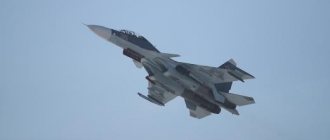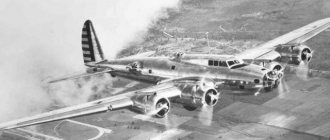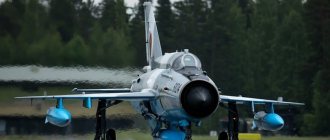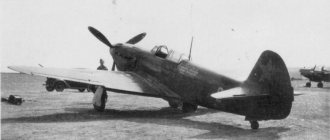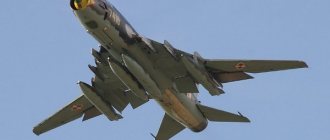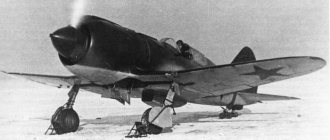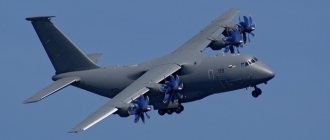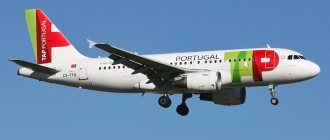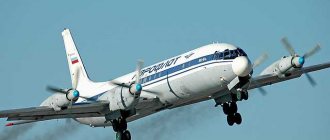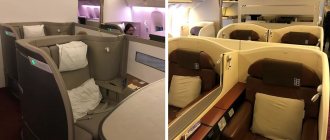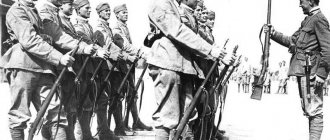On December 30, 1933, an aircraft of a rather interesting design left the hangar of plant No. 39, short and foreheaded, with a small wingspan, it was sharply different from the sesquiplanes that formed the basis of the air force fleets. Polikarpov's TsKB-12 fighter took off into the sky.
It was in this plane that the character of the “King of Fighters” sharply manifested itself - speed, pressure and aerodynamic smoothness of the silhouette were combined with an unstable balance, the plane was designed for maneuverable air combat and reacted to the slightest movement of the handle.
History of creation
Polikarpov began working on the I-16 fighter already at the age of maturity as a designer. Behind him were the U-2 training aircraft, I-5, I-15 fighters of various modifications, as well as low-volume and experimental aircraft.
And there was also the capacity to create a new aircraft, more and more aircraft factories were being launched, the fleet of machine tools was growing, and more and more new structural materials were being produced.
However, the then classic mixed design was chosen as the basis for the fighter. Motor frame made of steel pipes, shell-shaped fuselage made of birch veneer, wing made of plywood covered with canvas.
The chassis was made retractable, with manual drive. The armament consisted of two wing machine guns, at that time still PV-1, designed by Maxim, but air-cooled.
In the summer of 1933, the future I-16 began to finally take shape. The Townend ring was replaced by a NASA louvered hood. By the end of the year, two copies of the aircraft were manufactured, with the M-22 engine and the foreign F-2 Wright-Cyclone.
Already in February 1934, the aircraft was sent for state tests, despite the fact that Chkalov, who flew the new aircraft, believed that the I-16 was very difficult to control.
In March, they conducted a series of tests of prototypes to recover from a spin, since it was believed that the short fuselage of the fighter, by analogy with the competitor I-14, would be prone to a flat spin.
Chkalov himself carried out spin tests, during which he put the plane into a spin and brought it out of it 75 times, proving its stability. Moreover, to recover from a spin, it was enough to put the elevators in a neutral position, the I-16 itself came out of it, the same picture was observed when the aircraft was deliberately spinning.
The second legend of the USSR, test pilot Kokkinaki, joined the tests; it was under his control that the fighter at the end of March 1934 showed 359 km/h at the ground and 323 km/h at an altitude of 5000 m.
Subsequently, a number of changes were made to the design, mainly working on the landing gear retraction mechanism and the cockpit equipment. At the same time, the third prototype of the TsKB-12 was completed and prepared for testing, this time with the Wright-Cyclone F-3 engine; it was with this engine that the aircraft showed 437 km/h at an altitude of 5000 meters.
And at the end of 1934, the I-16 type 4 fighter was put into production, produced at factories No. 21 and No. 39 in small batches, about 60 aircraft in total, including experimental and “red five” ones. The aircraft were equipped with the M-22 and M-25 engines, and were armed with two wing-mounted ShKAS machine guns.
Birth
The first experimental machine, created through the efforts of the Experienced Design Bureau under the leadership of N.N. Polikarpova, was released on the penultimate day of the year 1933. The first test flight on a prototype of the future fighter was made by Valery Chkalov, one of the best Soviet pilots of that time.
Chkalov
Subsequent tests were carried out on modified prototypes, but experienced test pilots spoke very reservedly about the new machine. The pilots were frightened by the weak stability of the machine during flight, which, at the slightest loss of attention during piloting, fell into a tailspin. The first report on the progress of the tests was a real shock for N.N. Polikarpov. The car was recommended as capricious and difficult to control, which would be difficult for ordinary pilots to handle. The reason for this behavior of the new fighter lay in the design features. In order to achieve high speed characteristics and maneuverability, Polikarpov came up with the idea of making the plane deliberately unstable in horizontal flight. This required shifting the aircraft's center of gravity, making it completely dependent on engine power and control style.
Piloting a fighter required certain skills and abilities that were not yet taught in flight schools at that time. The biplanes in service with the Red Army were simple and easy to fly. The I-16 fighter put forward completely new requirements for pilots. To successfully pilot this aircraft, it was necessary to have an appropriate level of training and a high level of piloting culture.
The new car, which received the factory index TsKB-12, was born with difficulty and effort. The opinion of Valery Chkalov, who flew the car for two days, driving it in all flight modes, played a huge role in the subsequent fate of the aircraft. After the end of the flight, Chkalov called the plane an ideal fighter. Only after this the vehicle was recognized as suitable for adoption by the Red Army Air Force. Since 1934, the aircraft, already under the name I-16 or “sixteenth fighter” designed by Polikarpov, was put into mass production.
In service
To produce new fighters, the Soviet Government allocated four aircraft factories at once, which had previously produced combat vehicles of the Polikarpov family, I-5 and I-153 fighters:
- State Aviation Plant No. 39 in Moscow;
- aviation plant No. 21 in Nizhny Novgorod;
- plant No. 153 in Novosibirsk;
- State aviation enterprise No. 458 in Rostov-on-Don.
In the same year, a new Soviet high-speed fighter with an unusual layout for that time and flying at enormous speed was demonstrated to the Soviet public. For the first time, planes flew over Red Square at such high speed during the May Day parade.
I-16 design
Structurally, the I-16 was a low-wing aircraft with retractable landing gear and a traditional aerodynamic design. Mixed type design.
Fuselage
Semi-monocoque - this means that the load-bearing element was equally the frame and the skin. The frame is made of wooden spars and frames, covered with birch and pine veneer.
The surface of the wood was puttied on top and covered with canvas soaked in dope.
The fuselage contained:
- Engine on motor mount;
- Consumable fuel tank;
- Oil tank;
- ShKAS synchronized machine guns with boxes (with I-16 type 10);
- Pilot's cabin with a door (the second on the other side on the I-16 type 18);
- Pneumatic system (I-16 type 28);
- System of control cables and rods;
- Radio equipment.
Motor frame made of chrome steel pipes, steel fire partition. With the I-16 type 6, an armored back with a thickness of 5 mm appeared behind the cockpit. The steering surfaces had a wood-metal frame covered with canvas.
Starting with the I-16 type 18, a compartment for the battery and radio equipment with a rectangular hatch on the right side of the fuselage appeared in the aft compartment of the fuselage.
The I-16 type 28, armed with two wing-mounted 20-mm ShVAK cannons, had a pneumatic system, the compressed air cylinder was located in a gargrot behind the cockpit. Its (pneumatic system) task was to reload the guns.
Center section, wing and landing gear
Mixed design, two-spar. The center section fairings are made of plywood glued to a template, covered with fabric on top. It housed a fuel tank and a landing gear retraction mechanism.
The ailerons on the machine could be of two types:
- Long, on early types of cars;
- Short, later, to the end of the console.
I-16 type 10 and later modifications received Schrenk landing flaps. The release was carried out mechanically.
In the center section there were also landing gear niches, in the form of caps and channels for laying the struts. The rack caps had inspection windows for inspecting the mechanisms.
The landing gear itself is tricycle, with a non-retractable tail spike. The mechanism for retracting the main landing gear is mechanical; the pilot had to make several dozen turns with the handle in flight to retract or extend the landing gear.
At the same time, for better streamlining in flight, the niches were completely covered with landing gear flaps, in theory. When based on unpaved airfields, the lower flaps were often removed, as grass and dirt accumulated under them, as a result of which the aircraft could collapse.
Engine
Depending on the modification. The first I-16 type 4 received the M-22 engine and the Wright-Cyclone F-3, the subsequent I-16 type 5 and type 6 received the M-25A.
The I-16 type 10 had an M-25V engine, just like its upgraded models to type 16, which already had a new engine installed - the M-62.
I-16 types 24, 18 and 29 were equipped with the M-63 engine.
But there was one thing in common: air-cooled engines with radial cylinders. Colloquially "stars".
Technical characteristics are summarized in the table:
| Engine make | Number of cylinders | Engine power (nominal, at ground, hp) | Weight, kg |
| M-22 | 9 | 480 | 330 |
| M-22A | 9 | 625 | 433 |
| M-25V | 9 | 725 | 439 |
| M-62 | 9 | 820 | 560 |
| M-63 | 9 | 930 | 515 |
It is worth noting that the M-25V engine differed from the earlier M-25 and 25A only in the increase in rated power and altitude. Otherwise, it’s the same “Wright-Cyclone” F-3.
Armament
During the period of its service, the I-16 was equipped with various machine gun-cannon, bomb and missile weapons, so we will act somewhat unconventionally, considering the equipment of the aircraft depending on the type.
In the early modifications of the fighter, all its armament consisted of two wing-mounted ShKAS machine guns of 7.62 mm caliber. With the I-16 type 10, the armament was strengthened by adding two synchronized machine guns of the same system on top of the engine; moreover, some of the fighters received new Ultra-ShKASs with an increased rate of fire.
But after the battles in Spain, the firm conviction came that the rifle caliber was poorly suited to fighting all-metal enemy aircraft.
For this reason, projects emerged for arming the I-16 with ShVAK aircraft cannons; initially they were placed in the wing root. But this design did not take root.
Already on type 18, guns were installed in place of the wing ShKAS, the aircraft received the designation I-16 type 27, and was produced in a small batch.
The same fighter, but with an M-63 engine, received the index I-16 type 28.
Unfortunately, very few such machines were produced. At this point, attempts to install cannon armament on the I-16 ended.
The next attempt to strengthen the armament was the I-16 type 29, its armament consisted only of synchronized machine guns - 2x7.62 mm ShKAS (ultra ShKAS) and one 12.7 mm ShVAK or UBS machine gun.
The I-16's bomb armament consisted of 25 and 50 kg aerial bombs. Rocket - ROFS-82. In theory, ROFS and aerial bombs were not hung on the wing of cannon “donkeys,” but photographs show a somewhat opposite picture; there are several photographs of fighters with the RS-82 suspension.
An interesting option for using the I-16 with bomb weapons was to hang fighters with bombs on the plane of the TB-3 bomber; the project was called “Link” or SPB - a composite dive bomber and was well noted during the destruction of the Charles I Bridge in 1941.
But in this case, the I-16s carried 250 kg bombs, and it was not they who were armed, but rather the carrier itself, which, after the I-16 was released from capture, received a pair of ersatz dive bombers and escort of full-fledged fighters.
Spanish beginning
Spanish beginning
The I-16 fighter's baptism of fire occurred during the Spanish Civil War of 1936-1939. The first aircraft of this type were delivered from the Soviet Union to the Pyrenees in October 1936. Together with a batch of 31 I-16 type 5 fighters, pilots of the 1st brigade arrived from Bryansk. The three squadrons were commanded by Captain Tarkhov.
The very first appearance of I-16 fighters in the skies of Madrid on November 9, 1936 radically changed the nature of the air war. In fact, the I-16 became the first fighter in the world capable of transferring an air battle to a vertical plane and escaping the “carousel” on turns. The main opponents of Soviet-designed fighters were the Italian Fiat CR-32 and the German Heinkel He-51. The pilots of these aircraft quickly realized the threat posed by the I-16. and tried to take them into battle only if they had numerical superiority on their side. Among the Republicans, the I-16 aircraft were nicknamed “Mosca” (midge), Franco’s supporters nicknamed the aircraft “Boeing” (for its external resemblance to an American fighter) and “Rata” (rat).
The second batch, also consisting of 31 aircraft, arrived in Spain on May 7, 1937; on May 21, another 17 single-seat I-16s and four double-seat I-16UTIs were delivered to the Pyrenees. The planes were accompanied by pilots, most of whom served in the 142nd Aviation Brigade, based in Bobruisk. Together with the Soviet pilots, a small group of Spanish pilots arrived who had completed a training course at the Kirovobad Aviation School. By this time, several accidents had occurred in the skies of Spain with I-16 aircraft, the cause of which was the insufficient strength of the aileron hinge units. When maneuvering with high overloads during an air battle, the aileron fastenings were destroyed, the ailerons came off and the aircraft lost control. The incidents resulted in repressions in the Soviet Union. In the spirit of that time, the search began for those “enemies of the people” responsible for the sabotage. However, the real reason for the aileron separation was also established. As a result, the structure of 150 wings was strengthened, and the aileron skin was also replaced. Fourteen fighters were modified locally in Spain by July 1; on August 10, 1937, 62 aircraft modernized at the factory arrived in Spain.
Front view of the I-16 engine mount.
Ramon Castaneda, an instructor at the aviation school in El Carmoli, poses in front of the I-16, the photo was taken shortly before Castaneda died in a plane crash.
Operation of I-16 fighters in front conditions revealed many other defects. Thus, the wheels of the main landing gear with pneumatic tires measuring 750x100 turned out to be too narrow to work from Spanish airfields, which were characterized by rocky soil. Stones bouncing off the wheels during takeoff and landing damaged the horizontal tail. The defect was eliminated by installing pneumatic tires with dimensions of 750×150 and additional covering of the lower surfaces of the stabilizer and elevators. The source of constant problems was the cockpit canopy. The visor was splashed with oil, so to improve visibility, the pilots tried to fix the canopy in the open position, but when maneuvering, the canopy closed spontaneously. An unexpected benefit was the aircraft's extreme rear alignment. There were almost no cases of nosedrops, even during rough landings on unprepared sites.
Much attention was paid to studying the survivability of the aircraft in real combat conditions. Air battles over Valencia between 9 March and 8 April 1937 brought particular attention to this problem. It turned out that bullets from heavy machine guns of CR-32 fighters pierce the armored back of the I-16, and the protection of the fuel tanks of the Soviet fighter also leaves much to be desired.
While taxiing fighters at Spanish field airfields, the M-25 engines sucked in dust, causing them to quickly fail. All the first air-cooled engines were not equipped with oil coolers, but the experience of operating the I-16 in Spain revealed the urgent need to install oil coolers. The overheating of the engines was facilitated not only by the hot climate, but also by the pilots’ less than thrifty attitude towards their aircraft. The engines operated at maximum speed for almost the entire flight. In peacetime, no one imagined that airplanes would dive from a height of 3-4 kilometers to the ground, nor did they expect long low-level flights. Wildflowers blown over several kilometers by air have become a common occurrence.
And yet, in general, the I-16 deserved a positive assessment. The great advantage of the fighter airframe was its ease of repair. The average percentage of monthly losses was 35.4%, of which 18% were irrecoverable losses, and 16.4% were subject to repair in field workshops. The average “life” in combat conditions of one I-16 fighter was 87 days. A real surprise for the designers was the weather resistance of the wood and canvas structure. In the hot and dry Spanish climate, such structures were preserved much better than in the harsh conditions of Russia.
The main disadvantage of the I-16 was the relatively weak armament of the aircraft. His main opponent is the Italian Fiat CR-32. had much stronger weapons, which allowed Republican pilots to partially compensate for the lower flight characteristics of their biplane. Two 7.62 mm ShKAS guns were clearly not enough. A group of engineers from Plant No. 21, under the leadership of Borovkov, in just one night found the possibility of installing a third, synchronous, ShKAS machine gun in the lower part of the fuselage on the I-16. “Three-machine gun” I-16s were produced in small quantities. Even if some of them ended up in Spain, they did not have any impact on the course of air battles.
Later, a new modification of the I-16 appeared, armed, in addition to the wing ones, with two synchronized machine guns mounted above the engine.
The “four-point” version received the designation “I-16 type 10”. in Spain it was known as "Super Mosca". The fighters were sent to Spain directly from factories before they were officially adopted by the Red Army Air Force. The I-16 fighter with a more powerful M-25 engine, landing flaps and retractable ski landing gear passed state tests at the Air Force Research Institute only in February 1939.
Instructor pilots of the aviation school in El Carmoli against the backdrop of the I-16 fighter, 1938. Ramon Castaneda on the far left.
Shaving at the I-16 of the Republican Spanish Air Force.
The first I-16 type 10 aircraft were sent to Spain in March 1938 as part of a batch of 31 fighters; in the summer, ninety more I-16 type 10 aircraft were added to them. I-16 type 10 aircraft took part in fierce air battles in the summer of 1938. At the same time, the Spaniards received 24 American-made Wright Cyclone F54 engines; these engines had improved high-altitude characteristics. Several I-16s from the 4th squadron were re-equipped with American Wright Cyclones; The 4th squadron was commanded by one of the brightest aces of the Republican Air Force, Antonio Arias.
Calculations showed that the new engines will maintain power up to an altitude of about 7000 m, which will enable I-16 pilots to conduct air combat with Bf fighters on equal terms. 109. The first battles between two types of monoplane fighters showed. that up to an altitude of 3000 m they have approximately equal characteristics, but above that the power of the M-25 engine drops, while the Messerschmitt engine does not lose power up to an altitude of 5000 m. Due to the higher altitude of the engine, Bf pilots. 109 could dictate their terms of battle.
Antonio Arias' pilots surprised the enemy on September 17, 1938 over the Ebro in an air battle with a Messerschmitt squadron. In the first attack, unexpectedly falling from above, I-16 pilots with Wright Cyclones shot down four Bf. 109. In total, the republican pilots (I-16s with Wright “Cyclones”, “normal” I-16s and I-15s took part in the battle) shot down eleven enemy aircraft. Alas, this was already a farewell song. By the end of 1938, all Soviet pilots left Spain, and supplies of aircraft equipment from the USSR ceased. A total of 455 single-seat I-16 fighters and 20 two-seat UTI-4 fighters were sent from the Soviet Union to Spain; 422 I-16s and four I-16UTIs arrived at their destination.
The Frankists actually organized a naval blockade of the republic: 96 Soviet transports with military equipment were intercepted, and three (Komsomolets, Timiryazev and Blagoev) were sunk. The difficulties of delivering cargo by sea were predictable, so back in 1936 a technical commission arrived in Spain to study the possibility of manufacturing aircraft locally. The commission inspected 16 factories. On January 22, 1937, a report on the work of the commission was placed on the desk of the People's Commissar of the Aviation Industry M.M. Kaganovich. The commission considered it possible to organize aviation production in the Spanish Republic.
I-16 with flight code “SM-244” after an emergency landing on French territory, February 1938. The pilot flew to France after the Franco occupation of Catalonia.
The I-15 biplane fighter was chosen for mass production; Spain already had technical documentation for this aircraft, as well as a significant supply of components and assemblies for it. The assembly of the I-16 was preferable due to the higher flight characteristics of the monoplane fighter, but it was actually carried out in strict secrecy. The leadership of the Republic considered the issue of manufacturing at least a thousand I-16s in Spain. In the summer of 1938, production of I-16 type 10 fighters began at the SAF-15 plant in Alicante. By the end of the year, four fighters were assembled here, numbered from “SI-001” to “SI-004”. The first Spanish I-16s were armed only with wing-mounted machine guns; they can be considered as an intermediate option between the I-16 type 5 and I-16 type 10. Four I-16s built at the Alicante plant became the first and last monoplanes of this type manufactured in Spain and took part in battles on the side of the Republic. The next ten I-16s entered service after the fall of the Republic. After the end of the civil war, all Spanish-made Moskis, along with captured I-16s (22 aircraft in total), entered service with the 26-1 group, which was based in Mallorca. In 1941, another 28 I-16s were brought into flight condition. In 1948, all I-16 fighters of the Spanish Air Force received a new designation - S.8. The S.8 aircraft remained in service with the training units of the Spanish Air Force until 1953.
During the “Spanish period” of their history, I-16 fighters played an important role, acting as the main “getter” of trophies - the latest German-designed aircraft, familiarity with which was of great interest to the Soviet aviation industry. So. On December 4, 1937, after an unsuccessful air battle, a Bf fighter made an emergency landing. 109B. The plane fell into the hands of the Republicans. Two weeks later, a similar fate befell the He-111 bomber. Both German aircraft were taken to the Soviet Union, where they were carefully studied and tested.
Pilot Pedro Rueda from the 4th Squadron of the Republican Air Force in the cockpit of the Mosca.
During the Spanish Civil War, in Franco's army, the I-16 fighter received the official name "Boeing". In general, all Soviet-designed aircraft that fought in the Republican army were called “American” by the Francoists:
– Polikarpov I-15 – “Curtis fighter”, or simply “Curtis”;
– Polikarpov I-16 – “Boeing fighter”, or simply “Boeing”;
– Tupolev SB-2 with M-100 engines – “Martin bomber” or simply “Martin”.
Most likely, the American origin of the names of Soviet aircraft is associated with an arrogant attitude towards equipment designed in the USSR. It was believed. that at best the Russians are capable of copying Western models. In addition, the fact of licensed production of Wright Cyclone engines in the USSR was widely known. Pseudo-experts decided that the I-15 is a copy of the American Curtis Hawk II fighter, and the I-16 is a copy of the Boeing P-26 aircraft. The “experts” were not even bothered by the I-16’s retractable landing gear and lack of braces. Likewise, the SB-2 became a “copy” of the Martin B-10 bomber. In turn, the Republicans were in no hurry to publish the facts of receiving Soviet aircraft. There is a known case when a photograph of SB published in a Madrid newspaper. retouched to look like a B-10, caused an international scandal - the United States did not officially supply military equipment to Spain.
The I-16 received another name, more common among the Francoists, after one of the first air battles carried out by Soviet monoplanes in the skies of Spain. Ju-52 bombers made daylight raids on Madrid every day. The crews were accustomed to impunity, so the appearance of modern Republican fighters in the air came as a surprise to them. In order to have a moral impact on the residents of the capital of Spain, the Junkers, without feeling the slightest threat from air defense, flew at the height of the roofs of houses. The I-16 attacked precisely at that moment. when Ju-52 pilots waged “psychological warfare” against the Madrid people. One of the Junkers pilots shouted over the radio: “Salian de Todas partes soto ratas!” - they crawl from everywhere like rats! This. Of course, it’s just a legend, most likely a similar phrase took place, but it was pronounced in German. In the fall of 1936, the Ju-52 crews of the Franco Air Force consisted mainly of Luftwaffe soldiers. Be that as it may, the term “Rata” is firmly attached to the I-16. Moreover, in both German (ratte) and Spanish (rata) “rat” is pronounced almost the same. During the Great Patriotic War, German pilots continued to call the I-16 fighters a “rat,” and the emerging La-5 fighters, vaguely similar in silhouette to the I-16, a “super army.”
Republicans called the I-16 "Mosca". It's here. probably not at all in the hypothetical resemblance of an airplane to a midge. On the boxes in which the planes arrived in Spain, “MOSCOW” was written in large letters. "MOSCOW" turned into "MOSCOW".
Coloring
The first fighters were painted with silver paint, AIIal dope. But later, during the battles at Khalkhin Gol, it became clear that silver aircraft were extremely difficult to camouflage in the steppe.
The so-called “Khalkin-Gol” I-16 camouflage appeared.
Spots and stripes of protective paint applied randomly over the base paint with silver-gray dope.
In 1939-40, the aircraft were painted according to the Air Force standard, bottom AIIg, top AIIz, internal compartments with steel gray paint A-14. In 1941, some aircraft received camouflage according to the NKAP scheme. The base color is green, with wide stripes of anthracite black on top.
Winter paint was applied in parts; winter washable paint MK7 was used for painting.
Performance characteristics in comparison with analogues
At the beginning of its fighter career, the I-16 coped well with the aircraft of a potential enemy, moreover, it surpassed them in performance characteristics. But with age, the priority was lost.
In 1936-37 in Spain, the I-16 fought on equal terms with the Bf.109C of the Condor air group, but already in 1941 it was hopelessly inferior to the Bf.109E, both in armament and in speed.
Italian Fiats at that time were superior to the I-16 only in armament, against 2-4 rapid-firing ShKAS, Fiats argued with a 12.7 mm caliber, which, in the absence of an armored back and a mixed, wooden structure, had an extremely negative impact on the future service of the fighter.
But with the luck and professionalism of the Spanish volunteers, the losses were relatively small.
Although experienced pilots could still shift the battle to the horizontal, in a turning battle only the Japanese I-97 could compete with the I-16, but in terms of speed characteristics the “donkey” was already inferior.
I-16 collided with English and American classmates in the cold skies of Finland in 1939-40. But in these battles, armed parity was achieved; in terms of its performance characteristics, the I-16 was quite adequate in capable hands, of which, by the way, there were not so many. The complexity of control and combat affected it.
By 1943, almost all I-16s on the fronts with Germany were knocked out in battles, but some of the fighters remained in the Far East, where they served until the victorious year of 1945.
I-16 Donkey Dimensions. Engine. Weight. Story. Range of flight. Service ceiling
The aircraft, which became a milestone not only for Soviet but also for world aviation, was designed under the leadership of the “king of fighters” N. Polikarpov. The I-16 became the world's first serial fighter with retractable landing gear. This low-wing aircraft of mixed design had a relatively short fuselage with a shape close to a teardrop shape (which corresponded to the then ideas about aerodynamics). To improve the maneuverability of the I-16, it was deliberately designed to be insufficiently stable (the center of gravity coincided with the aerodynamic focus) and extremely compressed in size (which ensured low moments of inertia around all axes).
Application
The I-16 entered combat service in 1934, from that moment on it bore on its shoulders all the conflicts in which the USSR directly or indirectly participated.
I-16 fighters fought in the skies of China with Japanese aggressors, in the skies of Mongolia during border conflicts near Lake Khasan and the Khalkhin Gol River.
In 1936-37 in Spain, I-16 fighters won the affectionate nickname “Mosca” (fly) from the Republicans and the frightened and angry “Ratte” (rat) from the Francoists, Germans and Italians.
It should also be noted that the I-16 was produced by the Spaniards under license, but an extremely small number of aircraft were produced.
During the Liberation Campaign and the Winter War, the I-16s did not show themselves to be anything special. But in 1941, they took part in their last war. Aircraft of this type fought almost everywhere.
It was on the I-16 that Talalikhin rammed his Heinkel, the North Sea ace B.F. Safonov. first flew the I-16 type 24 into battle, and after that he switched to the I-16 type 28. It is this aircraft, one of the surviving ones. Of the 10,000 fighters produced by the factories, only 3 aircraft remained - I-16 Safonov, I-16 early types in the Chkalov Museum and UTI-4 in Finland.
Interesting Facts
During the first battles in Spain, the I-16 was considered the American Boeing P-26 fighter, due to the similarity of the silhouette. There is still some confusion in historical documents.
Europeans could not imagine that the Soviet Union had created an aircraft that could fight on equal terms with the advanced technical thought of Western aircraft designers.
Aircraft of this series bore the insignia of several countries:
- Spanish Air Force, both Republicans and Francoists;
- The Luftwaffe quite actively operated I-16s of various types in training units;
- Romania, about 15-16 cars;
- Poland, 1st IAP “Polish Army”;
- Finland, trophies;
- Mongolia, supplied to arm the Air Force;
- China, Kuomintang troops;
- Japan, trophies of battles with the Chinese Air Force.
Interestingly, during operation as trophies, the I-16 caused quite a lot of damage to the Luftwaffe. So in 1941-42, about 10 Luftwaffe pilots were disabled or died in an accident on the I-16 and UTI-4.
I-16 from Morona, a little known story. The plywood aircraft, produced in the 1930s in the USSR, served a long service in the Spanish Air Force. After Franco's victory, the Republicans' armaments almost completely went to him.
Including I-16 fighters. Spanish engineers slightly modernized them and sent them to training air bases. Including the aviation school in Moron, where he flew until August 19, 1953, which is an extremely long period for a combat aircraft.
Mark on history
Polikarpov's fighters left a noticeable mark on history, but it was the I-16 that made it very noticeable. His image was on almost every poster released in the 30s of the 20th century. In addition, his appearance is depicted on the obverse of the medal “For Courage”
Almost no historical aircraft have survived:
- I-16 type 5 in the Chkalov Museum (there are several atypical parts, for example the pilot’s visor from UTI-4);
- I-16 type 28 Safonova B.F. (in fact, a designer of several types);
- UTI-4 in the Finnish museum, the most technically well-preserved aircraft.
In the gaming world, I-16 fighters are represented in a number of flight simulators, such as Il-2 and War Thunder.
In cinema, his image was used in the films of the 30s and 40s, and he is best represented in chronicles.
Aces flew on I-16:
- Safonov B.F. – 20 personally, 5 in a group of downed enemy aircraft;
- Tsokolaev G.D. – 6 personally, 11 in a group of downed enemy aircraft;
- Golubev V.F. – 39 personally, 12 in a group of enemy aircraft shot down.
Such is the story of the unskilled worker in the sky of war. From 1935 to 1945, I-16s guarded the skies of our Motherland.
The plane as a symbol of the achievements of the Land of Soviets
The appearance of a monoplane fighter with a blunt nose and a short fuselage was initially met with skepticism among military pilots. The design of the aircraft broke all the stereotypes that had become established in fighter aviation in the early 30s of the 20th century. The blunt nose, short fuselage and retractable landing gear were atypical features for combat aircraft of the time. In addition, the new machine had to fly at a speed that was still considered an unattainable barrier among military pilots. At that time, there were already experienced and experimental racing models flying at high speeds, but in combat aviation the aircraft continued to remain low-speed.
Scheme
Soviet aircraft designer Nikolai Nikolayevich holds the title of the first aircraft designer who decided to break the established stereotypes in fighter aviation. His brainchild, despite the difficulties in putting the aircraft into operation, over time became a symbol of the achievements of the young Soviet state. The aircraft became not only the basis of Soviet fighter aviation in the pre-war period, but also opened the way for the subsequent parade of fighters - monoplanes, and new generation aircraft. Military pilots loved Polikarpov’s car, even despite its obstinate and capricious nature. If for beginners the I-16 remained a difficult aircraft to pilot, then for experienced combat pilots the machine appeared in a completely different light.
Takeoff I-16
Having mastered the technique of controlling a small, fast and nimble machine, Soviet pilots raised the Soviet Air Force to a qualitatively new level. In the skies of Spain, the world saw for the first time what modern fighter aircraft should be like, and much of the credit for this belongs to the Soviet I-16.
The Soviet aircraft spoke about the presence in the Soviet Union of a serious design school, which German designers Willy Messerschmitt, Ernst Heinkel and Hugo Junkers soon had to fight against.
